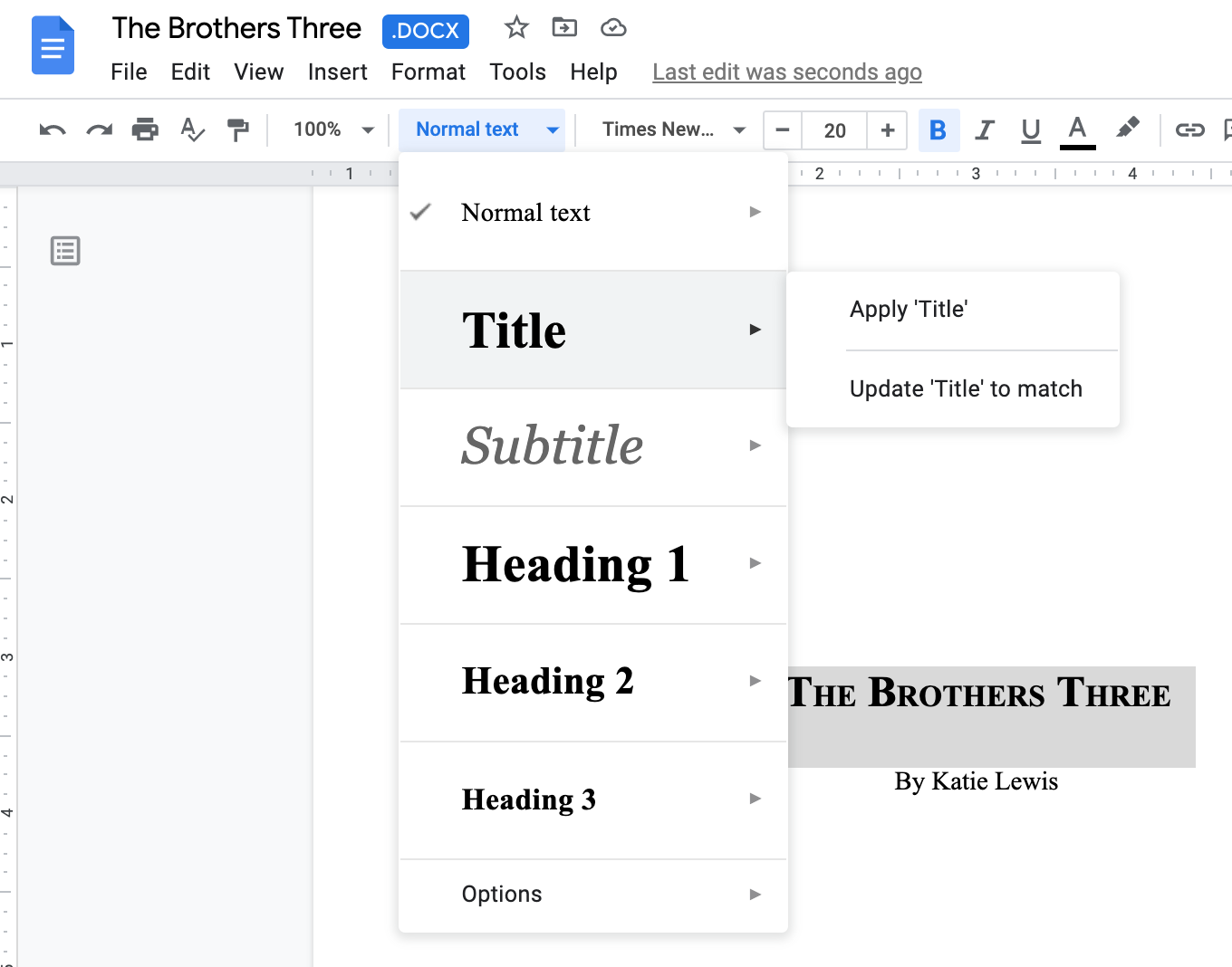Unsolicited novel submissions should look a certain way for literary agents
When a literary agent requests your full or partial manuscript (yay, you!), how you format your book manuscript matters. Formatting a novel for submission — title page, spacing, alignment — shows you take the process seriously and are considerate of the reading agent’s time.
Sometimes an agent outlines a specific format under their submission guidelines or will tell you outright that they want you to:
paste the first 20 pages in an email
attach a PDF of your full manuscript
link to a Google doc
or any number of preferences they might have. If they specify this, do it. Don’t try to be cute by, oopsie, attaching your full novel.
They will not read it. In fact, it might anger them that you didn’t follow instructions. It pays to be detailed.
What is manuscript formatting?
Manuscript formatting is how your text appears on the page. The presentation of font, spacing, and margins is the formatting, and there is an industry standard novel template.
What font should I use?
Here’s where we’re still stuck in grade school computer class: Most agents want double-spaced, 12-point Times New Roman with 1” margins as the font for manuscript submissions.
The body of the book should be aligned left, not justified — meaning the righthand side should be ragged, not even.
The text itself should be black with a white background.
(All of the above is what most book editors require, too.)
A standard manuscript format looks like this:
Title page
This is the first page and should not include a page number. Center-align your book’s working title (it’s OK if this title later changes) and byline. At the bottom-right, include your contact information. Some agents will also want an approximate word count here.
If you’re in a Google doc, as I am in the below example, you’ll want to select your book’s title text to be in the Title format. Do not underline your manuscript’s title.
Your book’s title page should be formatted like this.
How to set your book title format in a Google doc.
Second page
Page numbers should begin on your second page and start with 2. In your Google doc, go to Insert > Page numbers > More options.
Add the book’s working title and your byline to the header so it appears on each subsequent page.
Dedication page
I like to write my dedication page upon wrapping up my book because I find it hugely satisfying (the same goes for the Acknowledgements section), but my editor let me know she’s seeing more clients including their book description on this page. (Here’s a helpful resource for writing this description, which is essentially an ad for your work.)
If you’ve already been asked to submit a book summary, it could work in your favor to instead use this page to showcase reviews and blurbs of your past work.
Sentence and chapter spacing
Almost without fail, the first thing I have to do when editing an author’s manuscript is put it into a standard book format. It’s tedious, and it’s easily enough done by authors themselves.
Here’s what you want to look out for:
Spaces between sentences: Only one space should be between each sentence. One. Yes, they taught us two spaces, but that was way back in fourth grade. Yes, times have changed, and we need to relearn this. Yes, it will become second nature for you.
Page break between chapters: Each chapter should begin on a brand-new page, with Chapter 1 or the chapter title centered, in bold, about one-third of the way down the page.
Here is an example of the spacing before a Prologue, the first part of this book’s content.
The action begins with this first chapter. Chapter titles are being used in this example instead of Chapter 1, Chapter 2, etc.
Again, in a Google doc, here’s how you’ll insert a page break:
In your Google doc, go to Insert > Break > Page break.
One final thought
Do not forget to keep track of what exactly you’re submitting and to whom! Here’s how I keep track of my own submissions and what I recommend to my clients.
You might also be interested in:








